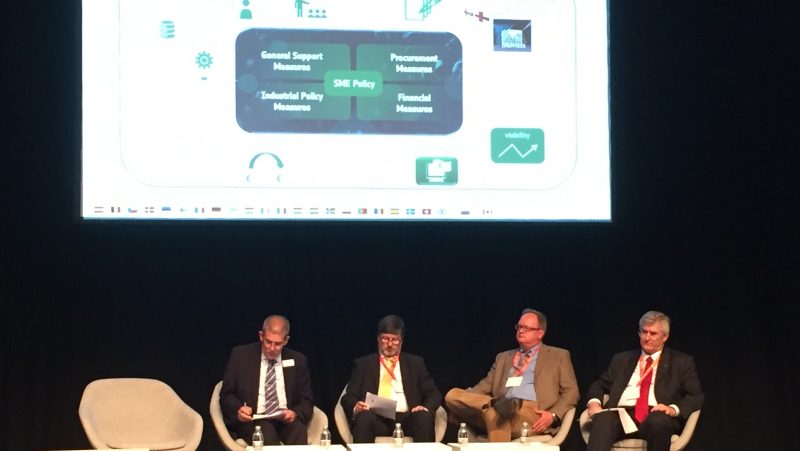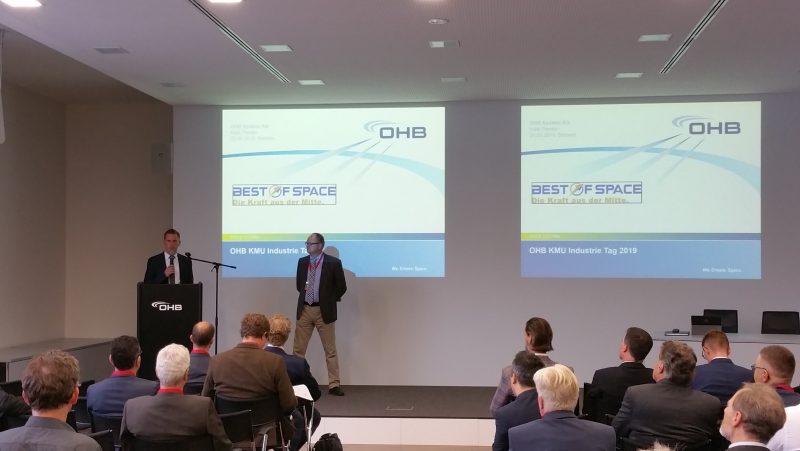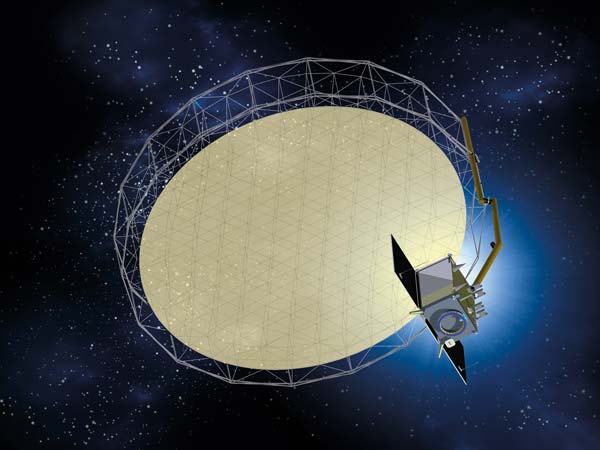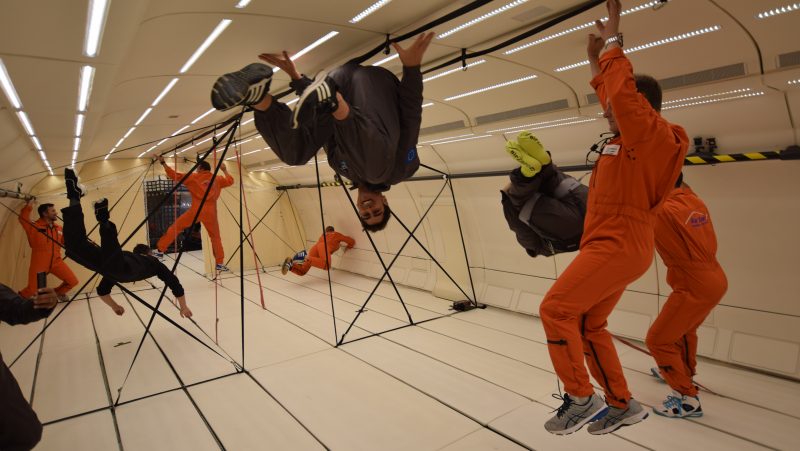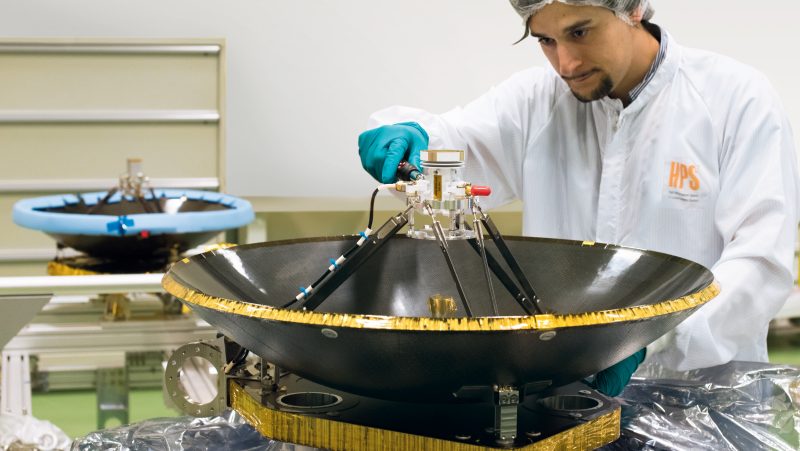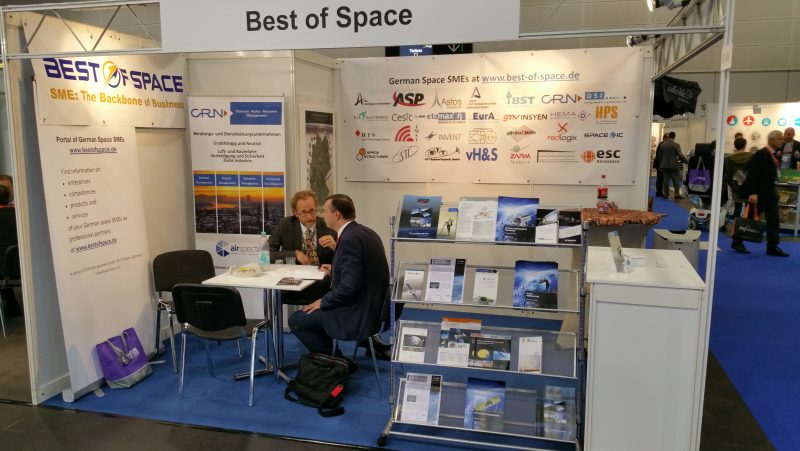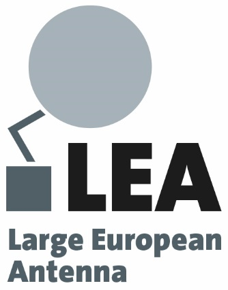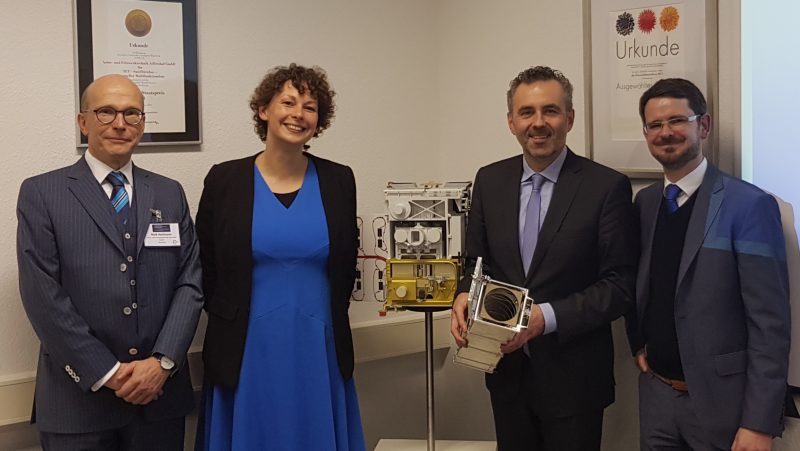Unter dem Titel „The Hard Road to the Stars: Challenges and Opportunities for SMEs in the European Space Business“ diskutieren Vertreter der ESA, SME4SPACE und des AKRK in der Zeit…
Kategorie: Allgemein
KMU-Industrietag bei OHB am 25.09.2019
Auf Initiative der Best of Space Unternehmen fand am 25. September 2019 bei OHB in Bremen ein Industrietag statt. Thomas Hintze, ASP, …
LEA: A European Declaration of Non-dependence in Space
In the name of all members of our pan-European WeLEA-consortium we proudly present a video, documenting the successful road of the development of one of the most needed critical technologies in space: the Deployable Large European Antenna (LEA)…..
„Bringt sich Deutschland um die Raumfahrt-Milliarden?“
Die Raumfahrt boomt weltweit, die lukrativsten Aufträge werden jetzt vergeben. Doch Deutschland droht…
Europas Euclid-Mission einen großen Schritt weiter
HPS liefert Flugmodell des Antennen-Reflektor-Assembly´s (ARA) an TAS-I in Rom…
Best of Space auf der SpaceTechExpo 2019 in Bremen
Deutsche Raumfahrt-KMU präsentieren sich unter ihrer Marke Best of Space auf der Messe SpaceTechExpo vom 19. bis 21. November 2019 in Bremen. Sie finden uns …
Best of Space präsentiert innovative Produkte auf „What`s next in space“ im bayrischen Landtag am 8. Juli 2019
Mittelständische Raumfahrt-Unternehmen, Wissenschafts- und Innovationspolitiker verlangen gemeinsam von Bundesregierung und Bayerischer Staatsregierung mehr Engagement für Zukunftstechnologien in der Raumfahrt. Anlässlich des 50. Jahrestags der ersten Menschen auf dem Mond fordern…
STI provides 1800 deployment mechanisms for Airbus Oneweb Satellites
No longer just a dream: Internet for everyone everywhere – Airbus OneWeb Satellites (AOS) is aiming for global broadband internet. The AOS mega constellation will consist of 900 small satellites. AOS selected SpaceTech to develop and deliver the 1800 solar array deployment mechanisms. …
HPS announcing crucial milestone set for Europe´s own large deployable reflector subsystem (LDRS)
Large deployable antenna reflectors are among the critical space technologies most urgently needed in Europe in order to drastically reduce the continent´s dependence on goodwill, knowhow, and supplies from the United States. …
Innovation der Kleinsatelliten – Thomas Jarzombek besucht die Astro- und Feinwerktechnik Adlershof GmbH
Am Mittwoch, dem 14. November 2018, besuchte der Koordinator der Bundesregierung für die Luft- und Raumfahrt Thomas Jarzombek das mittelständische Unternehmen Astro- und Feinwerktechnik Adlershof GmbH, um sich über die Innovationskraft der Kleinsatelliten zu informieren und …



